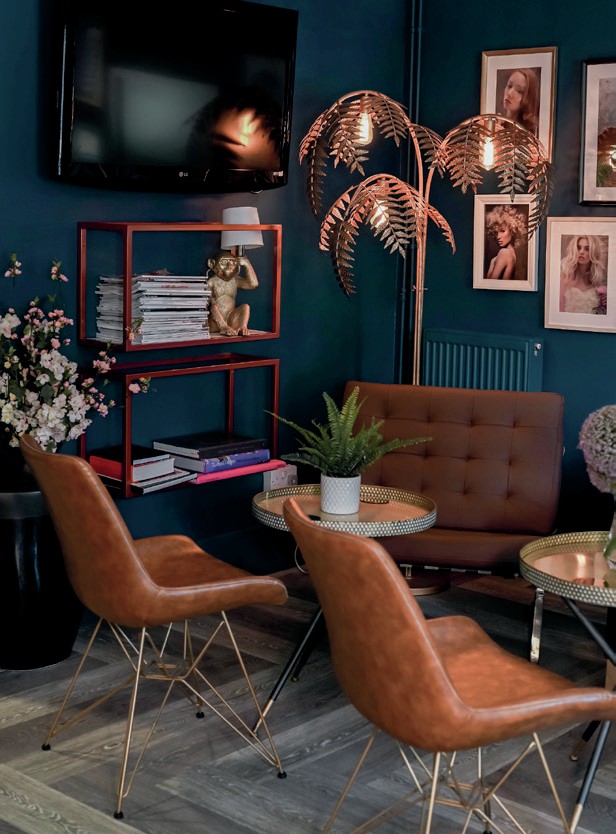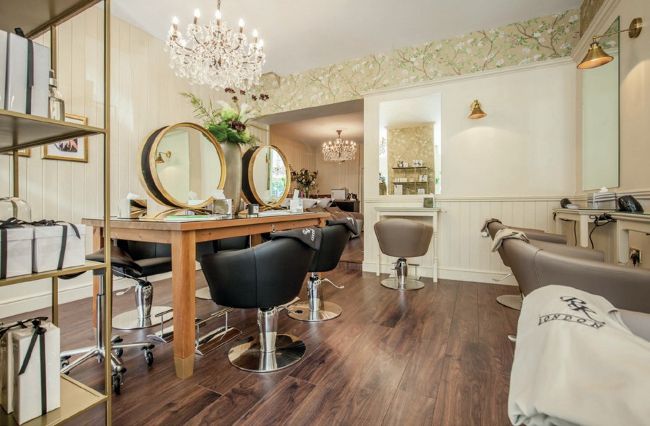WHAT YOUR CLIENTS REALLY WANT
Understanding your clients and creating an accessible space will not only increase customer loyalty but attract
A considered salon interior can go a long way towards making your salon appear and feel inclusive and accessible. According to disability charity, Scope, there are 14.6 million people in the UK living with a disability and over 4.7 million people working with a disability. There is a great importance placed on making every type of client feel welcome and comfortable in your business from the moment they walk through the door, especially considering that 32% of disabled people feel there is a lot of prejudice against them. For some that could mean providing a diverse range of services, making it clear that you are providing suitable access for those who are not able bodied or a friendly environment for clients that are neurodiverse.
The Walk Through
Brian Leo McCallum owner of ROAR Hair and Beauty, tells us that he deliberately took the decision not to have reception desks in his salon: “When designing our first salon we wanted to remove this traditional barrier between the hairdresser and the guest. Our approach is very personal and direct, we encourage our team to sit with the client face-toface for their consultation and even pay their bill using our salon tablet.” He explains that this personable approach strengthens relationships with guests and increases loyalty that in turn boosts business, repeat bookings and revenue. “We are very aware of being as accessible as a wider audience to your business possible, this was a large reason as to why we chose our salon location and designed the space the way we have,” says Brian MacMillan, Salon Director at F&M Hairdressing. Brian's salon features two entrances, one with stairs and one with flat access ensuring they are fully accessible, he explains: “Throughout the salon we made sure the furniture and stations were placed at specific areas that allow those with mobility issues to manoeuvre freely.” Tim Scott-Wright, owner of The Hair Surgery, tells us he made interior structural changes to open up and improve the flow and functionality of his salon: “In this large open plan space, we decided to have moveable sections that could positioned to create a private space for clients if needed. These sections can be wheeled around depending on how busy we are and also moved out to accommodate training and photo shoots. It’s a simple but clever solution to a problem that allows us to meet the needs of our customers, adapt to the staff and provide a flexible approach to training and creative projects.” Tim adds that this solution also saves money on professional shoots, educational days and training by providing a space for activities in the salon.

THE HAIR SURGERY

ROBERT KIRBY LONDON
A Safe Haven
In order for your client to get the most out of their time in the salon it is important they feel comfortable and safe. This sits at the top of the list for many clients who are spending money on what they hope to be a peaceful experience. “I wanted a space that was relaxing and secure but also accessible, so I opted for a colourful yet minimalistic feel, avoiding lots of clutter,” says Darrel Starkey, owner of Taylor’s Hair Studio, who also designed the space with a private area at the back of the salon for clients who need it. Meanwhile for Daniel Kelly, Founder of DKUK, his business began life as an art project – he says: “My motivation in the early days was to introduce people to new art and new hair, combining my two passions in an interesting way. It wasn’t about making a hair salon without mirrors, it was about cutting people’s hair in an art gallery.”
It wasn’t long before he realised that the space was fulfilling many different people’s needs, “People with body dysmorphia, anxiety and people who are transitioning have all been served well by our mirrorless salon. The growth has been slow but through word of mouth in specialist communities we have managed to expand to a bigger space which we’re really happy about.”
Brian MacMillan tells us he has also taken the meaning of a safe space one step further by becoming officially accredited as a ‘Safe Space’ in his local area of Barrhead by Police Scotland. “This means that those who are in need of, or require assistance, can visit our salon and be escorted to one of our safe areas in the salon while we make calls to the relevant authorities,” he tells us.
Home Is Where the Salon Is
Tim refurbished his salon in 2019 and for him the redesign was driven by enhancing the client experience and boosting the creative output. “We wanted a space that was reflective of our sociable personality, while accommodating our creative ambitions.” He adds that the space was styled as if it were a living room with a large, comfy sofa, occasional chairs, and coffee tables. “There is also a TV in this area, a refreshment station and a beauty bar. The space is used when clients first enter the salon, while their colours develop and even after their appointment to sit and relax. Our clients love this area and feel very calm here. Some clients hang out with us long after their appointment!”
Making a space where your clients want to come to escape – and even stick around after their appointment – is important to maintaining customer loyalty, and Robert Kirby, owner of Robert Kirby London, knows this better than anyone: “We wanted our salon to be a home from home, somewhere our clients can come to relax and forget about everyday worries.” Simple touches such as candles, muted tones, designer towels and flattering lighting have contributed to the feeling Robert wanted his salon to create. Your salon design could be the deciding factor for guests when considering rebooking an appointment. It’s design decisions like these that could be the answer to boosting your business.